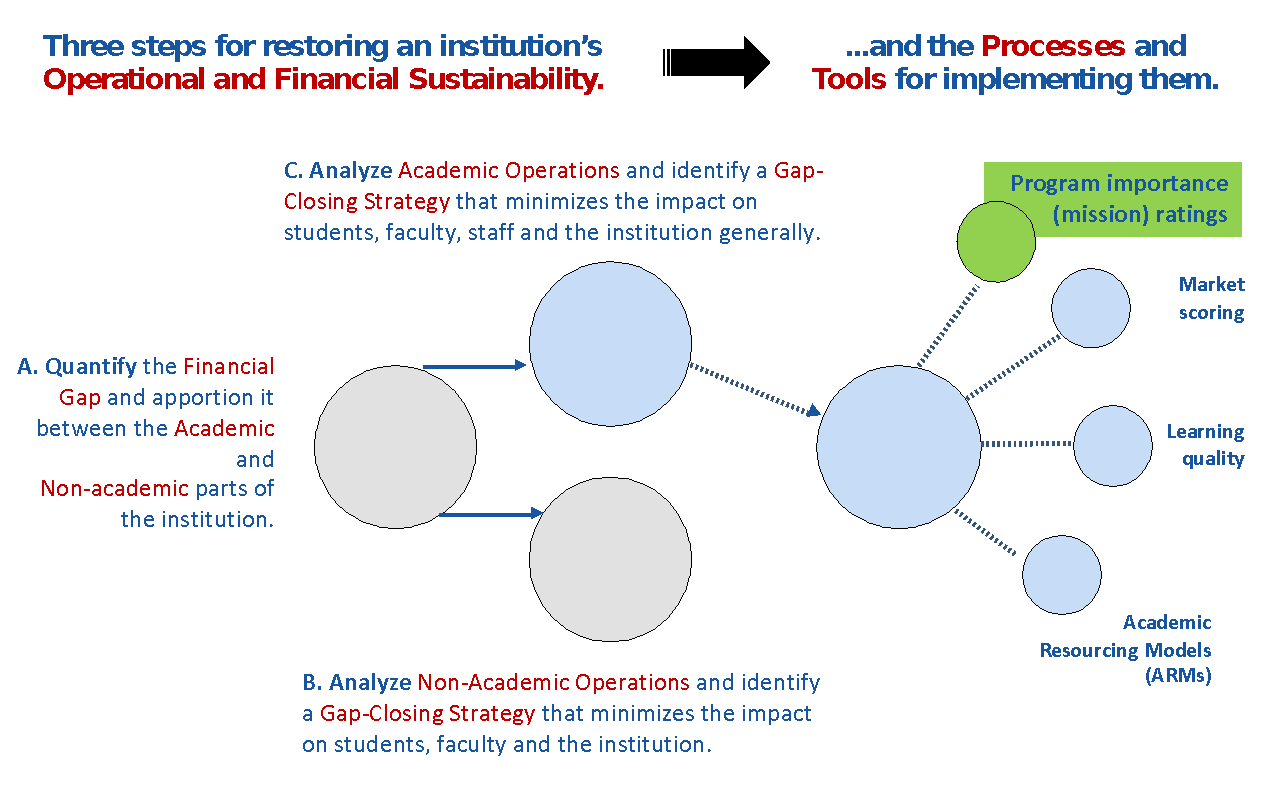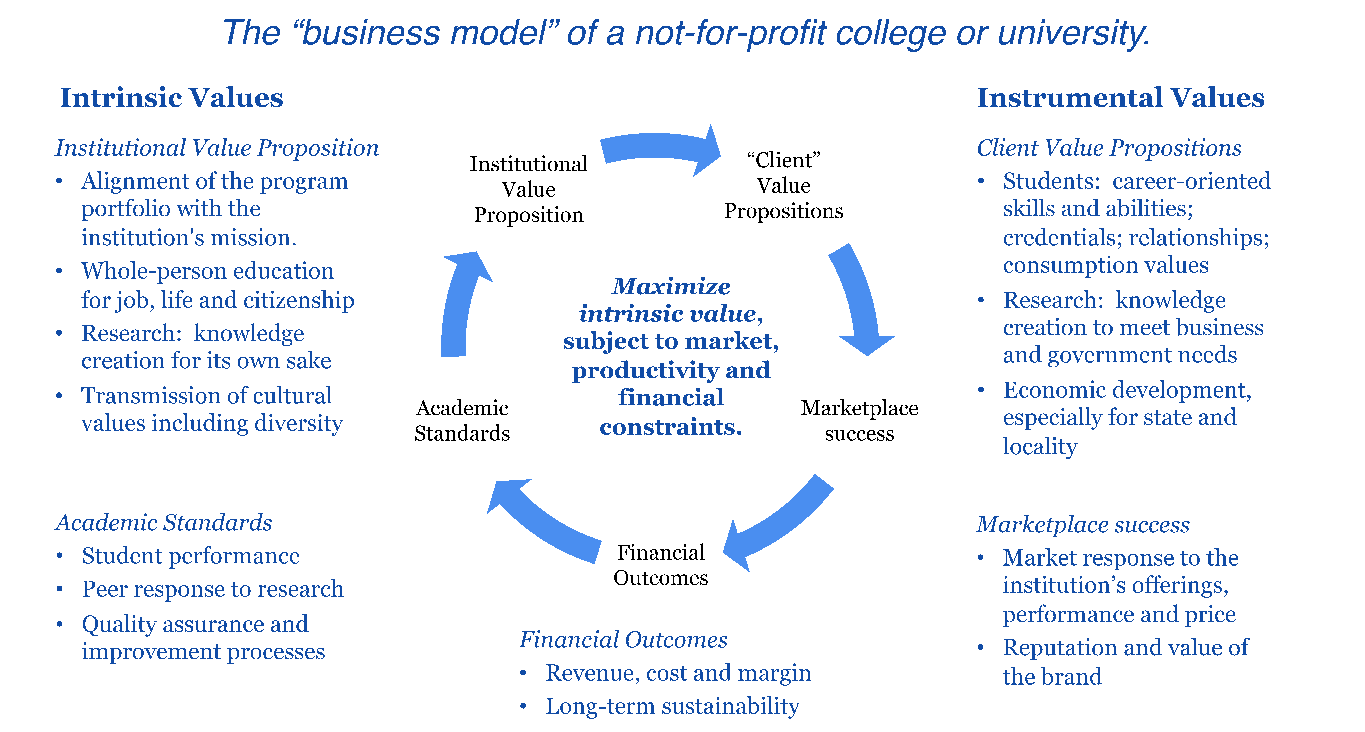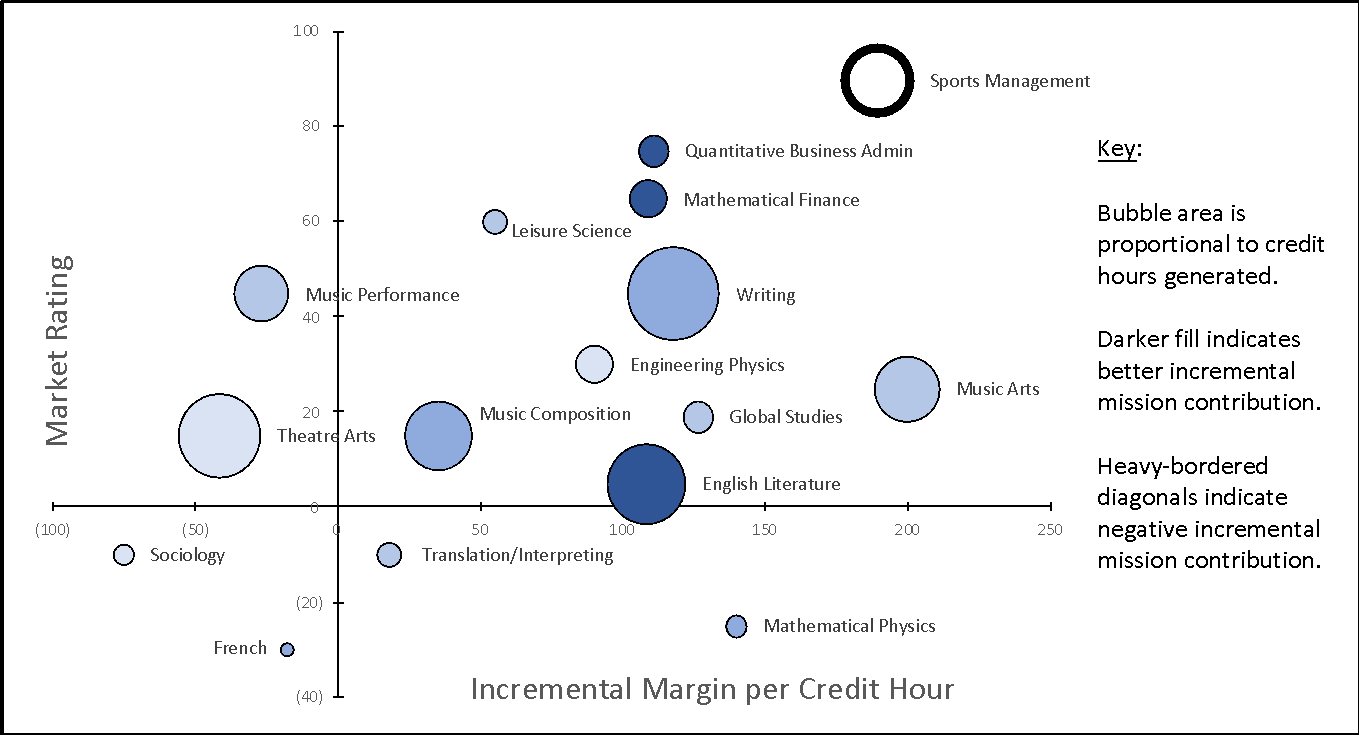Escaping the Academic Equality Quagmire
Escaping the Program Equality Quagmire

Academic programs, and the courses that deliver their content, are not of equal importance. The implications of this came home to me recently when, in a webinar on academic resourcing, a participant objected that provosts and deans should not “put their thumbs on the scale” by considering program importance when deciding admission targets and departmental budgets. “All programs and courses are of equal importance,” the participant asserted. “Providing their quality is good, all should have equal access to funding.”
I was reminded of an example I used when describing growth by substitution in Reengineering the University (p. 27):
“I’ve got good news and bad news about one of your programs” [the provost told the dean]. “The good news is that it continues to get good reviews from peers and students; the bad news is that I’m closing it down because it’s losing money and I think other programs are more deserving of subsidy.”
Why this raises hackles is easy to understand. No high-quality program in a well-run college or university should be viewed as intrinsically undeserving. Programs are important to the faculty who teach in them, the students enrolled in them, the graduates for whom they launched careers and lives, and perhaps also to other institutional stakeholders. Selective defunding violates institutional norms and can be expected to trigger protests and problems. Still, despite these difficulties, provosts, deans, and other decision-makers know they should take such actions. They are caught in a quagmire: that is, “a difficult, puzzling, or distressing situation from which there is no easy escape.” My goal here is to make the problem less difficult, puzzling, and distressing. Readers may recognize this as addressing the highlighted element of the roadmap presented in my previous blog.

What Program Equality Really Means
Avoiding judgments about the relative importance of programs means that academic resourcing decisions must hinge on factors other than mission. What might these be?
Money is the most obvious candidate. Programs with positive margins contribute to overheads and provide cross subsidies for programs that generate losses. Modern academic resourcing models quantify program margins more accurately and understandably than ever before. While this produces tremendous benefits, better quantification also adds to the allure of money-making as an oversized decision criterion. But wait: if making money is the name of the game, why subsidize programs that generate losses? Eliminating all the cross-subsidies would make even more money but is this what the institution should strive to do? Eliminating just some of the cross-subsidies might seem to resolve the problem, but it’s hard to choose when all programs are seen as equally important.
Other criteria such as the well-being of faculty and staff, institutional prestige, and success in the marketplace also fail to solve the equal-program-importance problem. The first two are easily eliminated and I’ll address the third shortly. First, not-for-profit tax exemptions are not intended for the private benefit of people who work in the institution. Second, prestige produces benefits for internal stakeholders and enhances market performance by increasing the value of degrees and the credibility of research. While the latter may have intrinsic value, the effects are weak compared to the value of the education and knowledge creation itself.
Alignment with Institutional Mission
This is best understood in the context of how decisions are (or ought to be) made in not-for-profit colleges and universities—depicted below by the so-called “non-profit business model.” Not-for-profits seek to maximize their own Intrinsic Values subject to various market, production and financial constraints. They also pursue Instrumental Values that reflect the needs and wants of clients, but success here is a means to an end rather than an end in itself. Financial outcomes also are enablers rather than ultimate goals.

Intrinsic value is rooted in an “Institutional Value Proposition” (what the institution wants to accomplish) and in “Academic Standards” (the quality of the teaching and research outcomes). Instrumental value derives from a “Client Value Proposition” (what students, research sponsors, and other external stakeholders want) and “Marketplace Success” (how external stakeholders view the institution). The two value drivers, together with the institution’s teaching/research processes and prices, determine the financial outcomes.
Our focus in this blog is on the alignment of programs with the institution’s mission (the first bullet under intrinsic values). In this context, “mission” refers to the fields and degree levels the institution wants to prioritize given current conditions. Usually this emerges from the school’s charter, traditions and shared governance conversations as interpreted by the provost and other academic leaders. If this seems too theoretical, consider the chaos that would ensue if no such priorities existed—or if large numbers of faculty and staff were able to impose their own priorities with respect to program sizes and cross-subsidies. The institution needs some sense of the importance of its various programs if it is to function effectively.
Note, too, that the intrinsic values can push back against the market. Well-run institutions take student preferences into account, but they don’t accept the business-oriented mantra that “the customer is always right.” Like other professional entities, they do their best to understand the client’s real needs and then apply their values and expertise to meet these needs so far as possible. This, too, can produce important differences among programs.
Judging Relative Importance
Few colleges and universities codify program importance at the present time, but the advent of better financial tools makes this increasingly problematic. Consider the illustrative program portfolio display in my January 7 blog, shown below, for example. The display plots each program’s margin on the horizontal axis and market score on the vertical axis. A bubble’s size reflects the program’s enrollment and its shading the mission contribution. Mission ratings can curb the impetus to grow programs in the diagram’s upper right-hand corner. More powerful methods for recommending which programs to grow, shrink, sustain, or sunset are now in development. Absent judgments about relative program importance, they will inevitably overemphasize money and market. The same is true for deciding which small-enrollment courses to prune, which has become an important cost-cutting strategy.

Mission contribution can be codified in many ways. A simple but effective procedure is shown below. The table at the left lists the 23 programs in a test dataset, together with their completed mission contribution ratings. Each program is rated high, medium or low using the method described in the right-hand panel. Many variations are possible, and the method can be used by individuals, groups, or both sequentially in a Delphi process. The important thing is to be mindful about program importance and identify at least some programs that are more and less important than the average. Such judgments fit nicely into the periodic program-portfolio review exercises now being conducted by many institutions.

Share This Post
Comment
Published at Tue, 24 Nov 2020 16:01:48 +0000
Article source: https://www.grayassociates.com/blog/escaping-the-academic-equality-quagmire-final